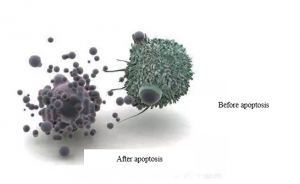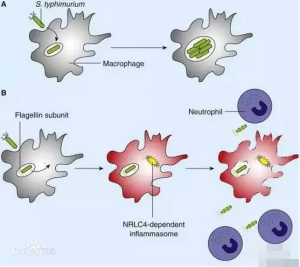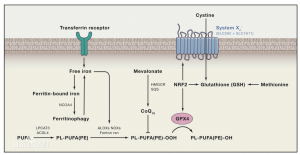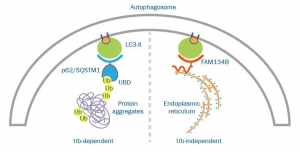Distinction between apoptosis, Pyroptosis, necrosis, iron death and autophagy
“To be, or not to be, that is the question”, To live or die, cells have to choose not only whether to die, but also how to die. There are many "patterns" of cell death, such as apoptosis, Pyroptosis, Ferroptosis and so on. Today, let's talk about cell death.
- What is apoptosis?

Apoptosis is a fundamental biological phenomenon of cells that plays an essential role in the removal of unwanted or abnormal cells in multicellular organisms. It plays an important role in the evolution of organisms, the stability of the internal environment and the development of multiple systems. Apoptosis is not only a special type of cell death, but also has important biological significance and complex molecular biological mechanisms. Apoptosis is a process that is tightly controlled by multiple genes. These genes are very conserved among species, such as Bcl-2 family, caspase family, oncogenes such as C-myc, tumor suppressor gene P53, etc. With the development of molecular biology technology, various apoptosis processes have been affected. Considerable understanding, but the exact mechanism of apoptosis process is not fully understood so far. The disorder of apoptosis process may be directly or indirectly related to the occurrence of many diseases. Such as tumors, autoimmune diseases, etc., there are many factors that can induce apoptosis, such as radiation, drugs and so on.
- What is Pyroptosis?

Pyroptosis, also known as inflammatory necrosis, is a type of programmed cell death, which is characterized by the continuous expansion of cells until the cell membrane ruptures, resulting in the release of cell contents and the activation of a strong inflammatory response. Pyroptosis is an important innate immune response in the body and plays an important role in the fight against infection. Pyroptosis is the programmed necrosis of cells mediated by gasdermin. Pyroptosis is a new type of programmed cell death discovered and confirmed in recent years, which is characterized by dependence on inflammatory caspases (mainly caspase-1, 4, 5, 11) and accompanied by a large number of release of pro-inflammatory factors. The morphological characteristics, occurrence and regulatory mechanism of pyroptosis are different from other cell death methods such as apoptosis and necrosis.
- cell riecrosis
Cell necrosis (cell riecrosis) is another way of cell death which is different from apoptosis. It usually refers to cell death caused by accidental damage, such as chemical factors (strong acid, strong alkali, toxic substances, etc.), physical factors (high fever, radiation, etc.), biological factors (pathogens, etc.) or pathological stimulation. At this time, the level of ATP in the cell decreased to the extent that the cell could not maintain the physiological activity of the cell, vacuoles appeared in the cytoplasm, cell membrane was damaged, and the contents of the cell, including broken organelles and chromatin fragments, spilled out, causing inflammation in the surrounding tissue. During cell necrosis, chromatin did not agglutinate and did not produce DNA degradation fragments of 200bp, but degraded randomly without the formation of apoptotic bodies.
- Ferroptosis

Ferroptosis is a new type of programmed cell death that is iron-dependent and different from apoptosis, necrosis and autophagy. The main mechanism of ferroptosis is that under the action of ferrous iron or ester oxygenase, it catalyzes lipid peroxidation of highly expressed unsaturated fatty acids on the cell membrane, thereby inducing cell death; in addition, it is also manifested as an antioxidant system ( The glutathione system) of the regulatory core enzyme GPX4 decreased.
- Autophagy

Autophagy (autophagy=self-eating) means autophagy, which is a process in which eukaryotic cells use lysosomes to degrade their own cytoplasmic proteins and damaged organelles under the regulation of autophagy-related genes (autophagy related gene,Atg). Autophagy is a tightly regulated pathway, which plays an important role in the regulation of basic metabolic functions, which enables cells to remove damaged or harmful components through catabolism and recycling, and maintain the dynamic balance of nutrition and energy. Autophagy is also a major protective mechanism that enables cells to survive under a variety of stress conditions, such as nutrient or growth factor deprivation, hypoxia, reactive oxygen species (ROS), DNA damage or intracellular pathogens.
6、Different detection methods :
| Cell death mode | detection methods |
| apoptosis | Detection of mitochondrial membrane potential, Annexin V/PI, TUNEL, apoptosis-related pathways, apoptosis-related proteins |
| Pyroptosis | Gasdermin D, Caspase-1, Caspase-4 IL-1β, IL-18 and other indicators |
| cell riecrosis | High mobility group protein B1 (HMGB1), lactate dehydrogenase A (LDHA), interleukin-1 β (IL-1 β) and other indexes |
| Ferroptosis | Cell viability assays: CCK-8, intracellular iron levels (eg: PGSK probes), levels of reactive oxygen species, changes in death-related factors such as COX-2, ACSL4, PTGS2, NOX1, GPX4, and FTH1 |
| Autophagy | Detection of changes in the levels of autophagy-related proteins such as Atg5, Atg7, BeclinI, LC3, P62, autophagosome fluorescence single/double labeling method, and detection of lysosome function |
Related product recommendation:
| Cat | Name |
| KTD102-EN | Apoptosis Assay Cocktail |
| KTA4001 | Mitochondrial Membrane Potential Assay Kit (JC-1) |
| KTA0002 | Annexin V-AbFluor™ 488 Apoptosis Detection kit (Green Fluorescence) |
| KTA2010 | TUNEL Apoptosis Detection Kit (Green Fluorescence) |
| KTA3020 | Caspase-1 Assay Kit (Colorimetric) |
| KTA3023 | Caspase-4 Assay Kit (Colorimetric) |
| BMU106-EN | SuperKine™ Maximum Sensitivity Cell Counting Kit-8 (CCK-8) |
| KTB1910 | CheKine™ Reactive Oxygen Species (ROS) Detection Fluorometric Assay Kit |
| KTC4220 | TraKine™ Pro Live-cell Lysosome Staining kit (Orange Fluorescence with Super Resolution) |











